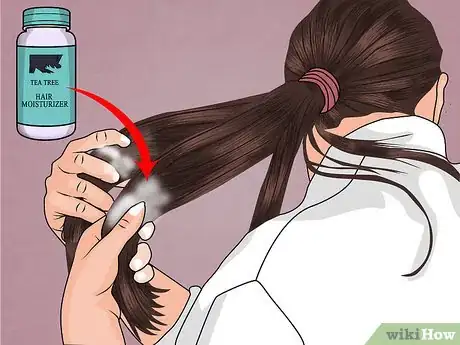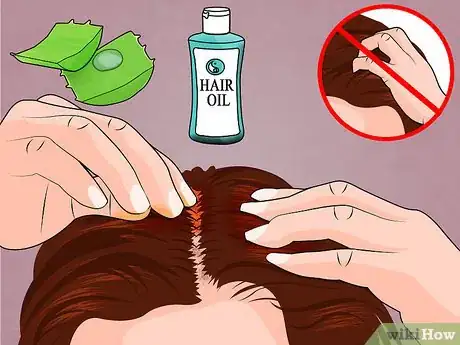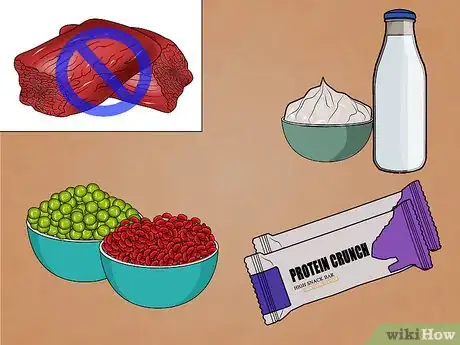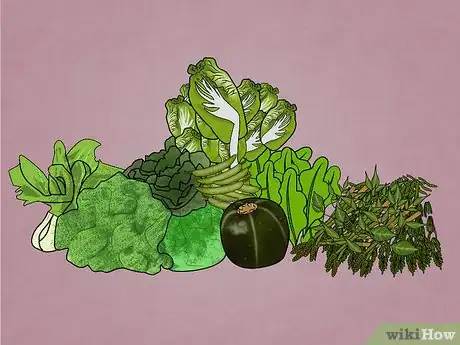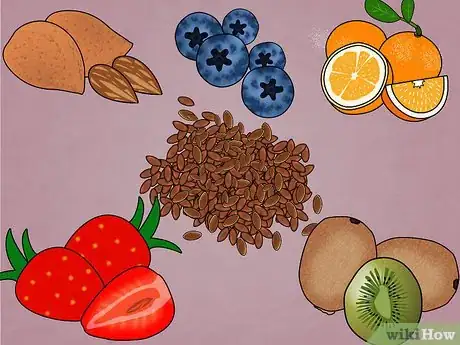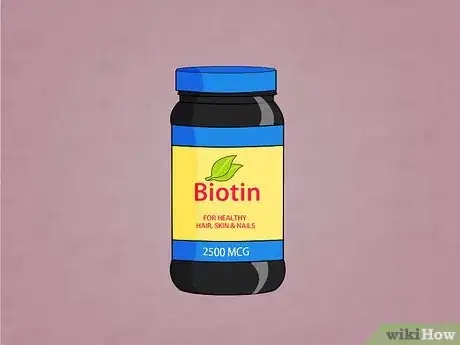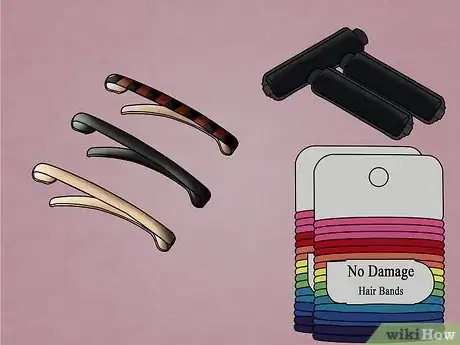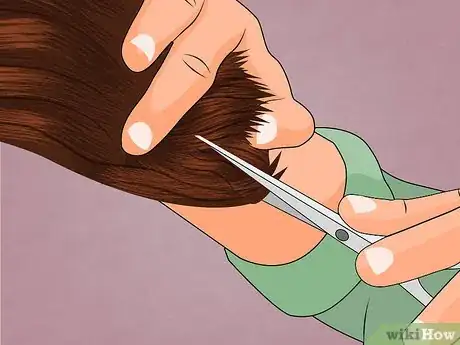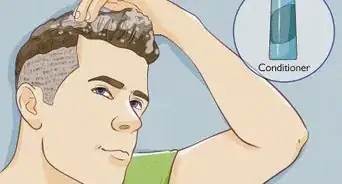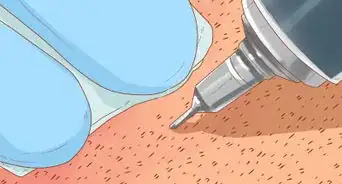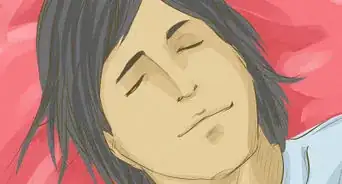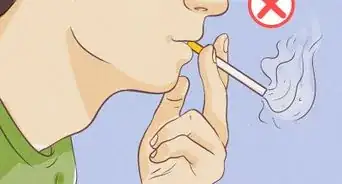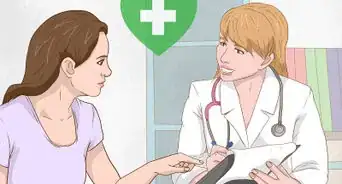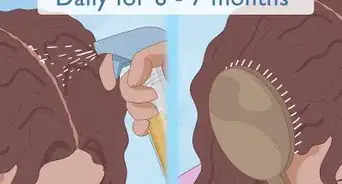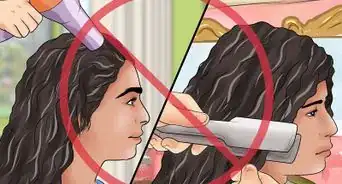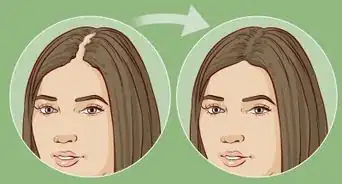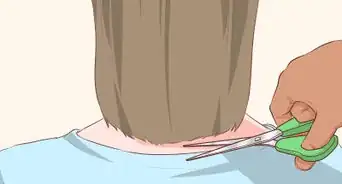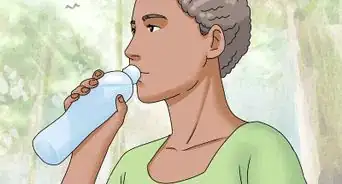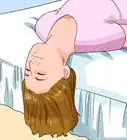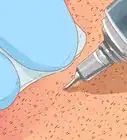This article was co-authored by Patrick Evan. Patrick Evan is the Owner of Patrick Evan Salon, a hair salon in San Francisco, California. He has been a hairstylist for over 25 years and is a Thermal Reconditioning Specialist, dedicated to transforming difficult curls and waves into sleek, straight hair. Patrick Evan Salon was rated the Best Hair Salon in San Francisco by Allure magazine, and Patrick's work has been featured in Woman’s Day, The Examiner, and 7x7.
There are 8 references cited in this article, which can be found at the bottom of the page.
wikiHow marks an article as reader-approved once it receives enough positive feedback. In this case, 100% of readers who voted found the article helpful, earning it our reader-approved status.
This article has been viewed 142,921 times.
If you've had your hair chemically relaxed, you'll now have straight and smooth locks. Your new hair has faced a traumatic process and may now need some extra attention to ensure the longevity of your new relaxed look. To keep your hair growing thick and healthy, be mindful of your aftercare, be cognizant of your diet, and make an effort to prevent future damage.
Steps
Caring for Your Hair
-
1Keep your hair moisturized daily. The biggest concern after relaxing is often the level of dryness in your hair. You will need to take steps to add extra moisture to your hair to prevent frizziness and breakage.
- Try baggying your hair when dealing with extra dryness. This is when you apply a moisturiser to dry hair and place a plastic cap on top of it for 2-3 hours. After that, seal in the moisture with an oil such as olive oil or castor oil. Baggy your hair no more than twice a week.
- Shampoo less frequently. Shampoo is full of chemicals and is drying to hair. When you must shampoo, try using a sulfate free shampoo, as sulfates (a foaming agent) are drying to hair.[1] When picking a shampoo, choose one that is marketed as moisturizing or contains products such as shea or argan oil. If your hair looks oily, try to remember that the natural oils produced by your scalp are moisturizing and healthy.
- Don't be shy about using conditioner. Use a large dollop and apply generously, especially to brittle and fragile ends. If time permits, let it sit for five minutes in the shower before rinsing.
-
2Take care of your scalp. Scalps are often a neglected area of the body. During relaxing, your scalp will be surrounded by smelly, harsh chemicals. Don't forget to show it some love in order to promote healthy hair growth.
-
1
- If you are experiencing redness or itchiness, don't scratch. Try applying aloe vera to your scalp. Aloe is known for its cooling and de-itching properties. Simply rinse the gel from your hair after your scalp feels refreshed.
- Give your scalp an oil massage. Use a gentle oil such as almond or baby to gently massage your scalp. This will help open and relax pores, and will be calming to your skin.
- If you find traditional shampoo unbearable, try using baby shampoo. Extremely gentle and non-drying, baby shampoo is a great option if you find your scalp to be extremely sensitive after relaxing.
EXPERT TIPPatrick Evan is the Owner of Patrick Evan Salon, a hair salon in San Francisco, California. He has been a hairstylist for over 25 years and is a Thermal Reconditioning Specialist, dedicated to transforming difficult curls and waves into sleek, straight hair. Patrick Evan Salon was rated the Best Hair Salon in San Francisco by Allure magazine, and Patrick's work has been featured in Woman’s Day, The Examiner, and 7x7.Professional Hair Stylist
 Patrick Evan
Patrick Evan
Professional Hair StylistOur Expert Agrees: Using the correct home care regimen to ensure your hair stays healthy will result in the maximum length possible.
-
2Get extra moisturized by using a deep conditioning treatment or hair mask. Deep conditioners use specialized proteins such as keratin to penetrate within your hair's pores to add moisture. Proteins also coat split ends, improving the overall appearance of your hair.[2]
- If on a budget, try a do-it-yourself mask of coconut oil. Gently massage two tablespoons of body temperature coconut oil into your damaged hair and wash with a moisturizing shampoo and conditioner afterwards. If you can't bear the oiliness in the daytime, try sleeping with the oil in and rinsing come morning.
- A hair mask containing clay will help heal and moisturize your scalp as well as your hair. If your scalp feels raw, clay's antibacterial properties will help keep it clean and fight infection.[3]
Stepping up your Healthy Hair Diet
-
1Eat more protein. Hair is composed of proteins and consuming low amounts can cause dry, brittle hair, or hair loss. Upping your intake will help restore damaged hair after the relaxing process.[4] Most commonly, meat sources such as beef, pork, chicken, and seafood are used as a protein source.
- Not a big meat eater? Try eating more dairy. Dairy products such as milk, cheese and yogurt have a high protein content but are also sometimes fortified with vitamin D. Though not enough research has been conducted, some users say vitamin D plays a role in increased hair growth.
- More protein doesn't have to mean more meat. Legumes such as beans, peas, and peanuts are a high protein source.
- Have protein on the go. There is many breakfast or snack bars available in grocery stores which are protein-based. Bars are a filling way to get your protein on a tight schedule.
-
2Increase your iron. Low iron levels are linked to poor hair growth.[5] Iron is required for your nutrient-rich blood to keep hair roots stimulated. Many vegetables such as spinach, broccoli, and other leafy greens are high in iron.
- Be cautious about what you're eating your iron with. Iron uptake can be halted by calcium, so don't expect broccoli with cheese sauce to be efficient for your iron levels.[6] Try eating iron-sources solo, such as spinach salad loaded with fruits and vegetables.
-
3Get your vitamins. Vitamin C and E aid in growth of beautiful hair.[7] They also increase the strength of nails, encourage clear skin and strong bones.
- Collagen is a major component in hair. Vitamin C aids in collagen production; this means your hair will be smooth and strong when you get more vitamin C.[8] Vitamin C is most commonly associated with oranges, but try snacking on kiwi, blueberries, or strawberries.
- Vitamin E can be taken as an oral supplement or applied as a liquid mineral oil. If you want to keep it natural and eat your vitamin E, the most efficient way to eat it is through nuts such as almonds, sunflower seeds, or peanuts.
-
4Take a biotin supplement once a day. Though evidence is insufficient, it has been observed that biotin promotes healthy hair.[9] Biotin is found naturally in dairy products, meat and fish, though in small amounts.
Using Gentle and Protective Styling
-
1Protect your hair from heat. After relaxing, it is best to not use heat styling of any kind on your hair. It will amplify the dryness and can cause a large amount of breakage.
- After washing your hair and allowing it to air dry till damp, blow dry on the lowest heat setting. Dry for as short of time as possible to prevent excess damage.
- If you must speed up drying time, use a soft t-shirt to squeeze moisture out of your hair. The t-shirt will be gentler and more absorbent than your rough towel.
- Use a protectant spray if you must use heat tools. A heat spray contains proteins to coat the sheath of the hair and act as a buffer between your hair and heat tools.
-
2Style without heat. Styles such as braids do not need heat and allow braids one day, and beautiful waves the next. This cuts down on shampooing amounts and allows your hair to regain strength after the first few days of your relaxing.
- Satin-covered rollers are a no-heat option. The rollers will lower the amount of frizziness, and the satin will prevent rubbing and tangling.
- Whenever using hair elastics, try to use no-damage bands. Many hair elastics are designed for less damage and ripping when used.
- Pick up some fashion friendly clips. Barrettes that are smooth with no teeth will prevent your hair from being damaged. Available in an assortment of styles, barrettes can be used to simply pin your hair away from your face or keep it up off your neck in a pony-tail style.
-
3Get regular cuts and trims. Split ends are a part of life, no matter how well you care for your hair. After a tough processing like relaxing, already-beat-up ends can be brutalized. Regularly trim your split ends to prevent the damage from travelling up into your hair.
- A professional can spot hair damage you might not be able to. Keep a pro on speed dial and get your hair trimmed regularly. Don't be afraid to ask your stylist for tips and suggestions. After all, they are there to help you.
References
- ↑ http://www.womansday.com/style/beauty/a5020/10-things-you-didnt-know-about-shampoo-109166/
- ↑ http://www.webmd.com/beauty/hair-repair/ss/slideshow-best-kept-hair-secrets
- ↑ http://jac.oxfordjournals.org/content/61/2/353
- ↑ http://www.bbcgoodfood.com/howto/guide/what-eat-healthy-hair
- ↑ http://www.webmd.com/skin-problems-and-treatments/hair-loss/news/20060516/hair-loss-may-be-iron-deficiency
- ↑ https://ods.od.nih.gov/factsheets/Iron-HealthProfessional/
- ↑ http://www.bbcgoodfood.com/howto/guide/what-eat-healthy-hair
- ↑ http://www.news-medical.net/health/What-is-Collagen.aspx
- ↑ http://www.webmd.com/vitamins-supplements/ingredientreview-313-BIOTIN.aspx?drugid=313&drugname=BIOTIN
About This Article
To grow relaxed hair, wash your hair with a moisturizing shampoo. After applying shampoo, put on a large amount of conditioner and let it sit for 5 minutes before washing it out. You can also try applying a homemade hair mask consisting of 2 tablespoons of coconut oil. Then, sleep with the oil in overnight before washing it out with shampoo the next day. If your scalp is red or itchy, try applying aloe vera oil to cool it down. When it comes to styling your relaxed hair, try to avoid using any heat on it and get regular trims to deal with split ends. For tips on how to strengthen your hair by changing your diet, read on!
